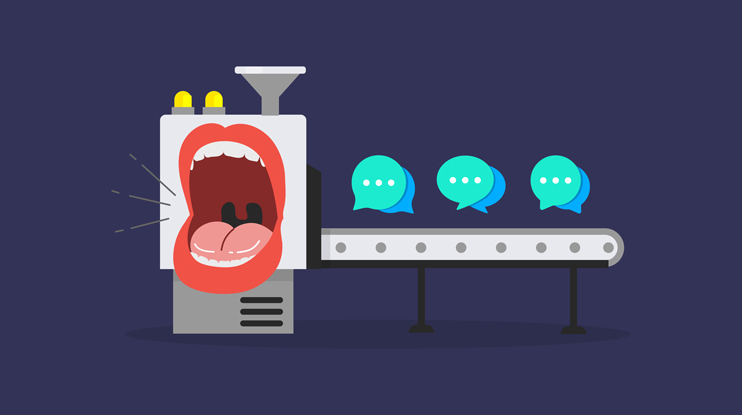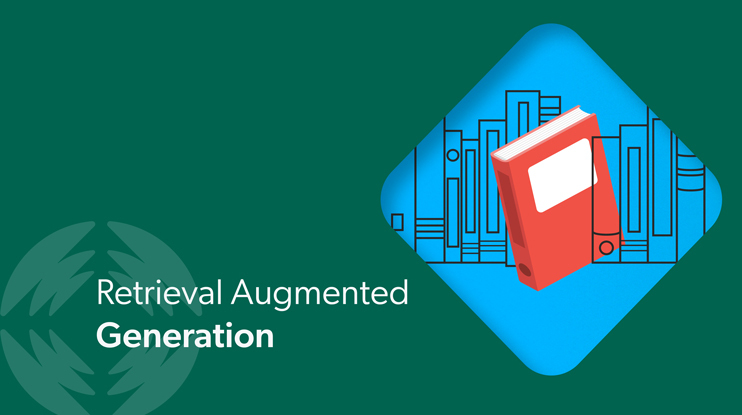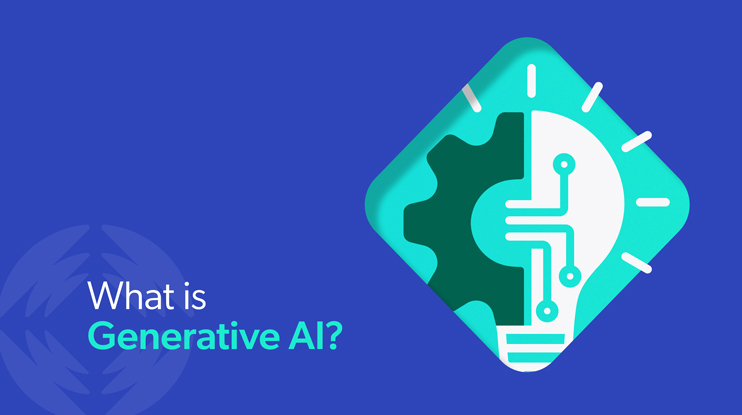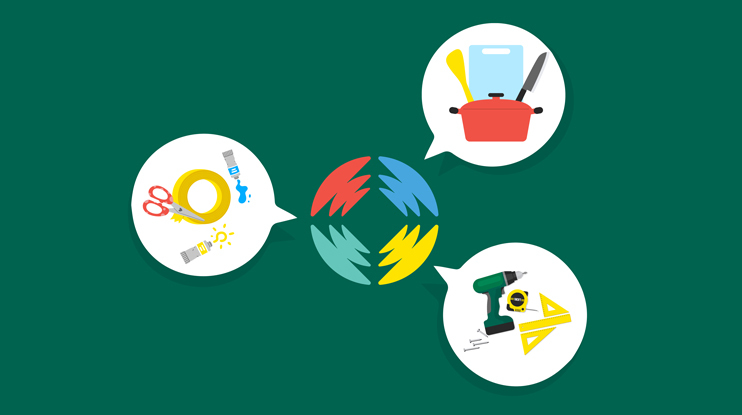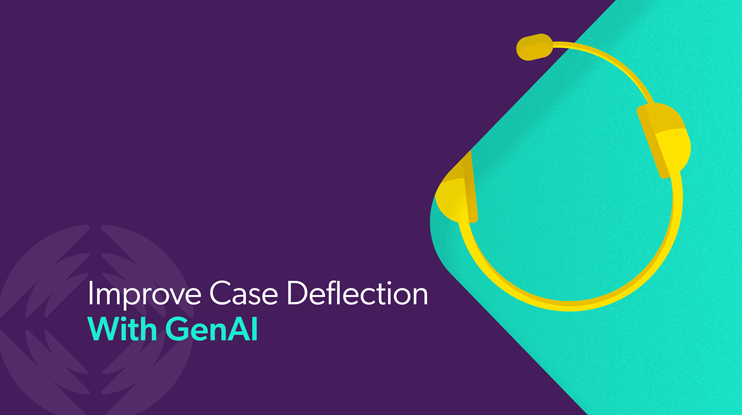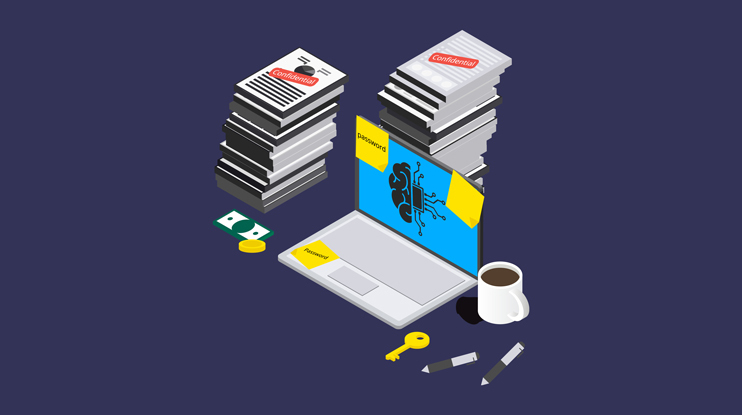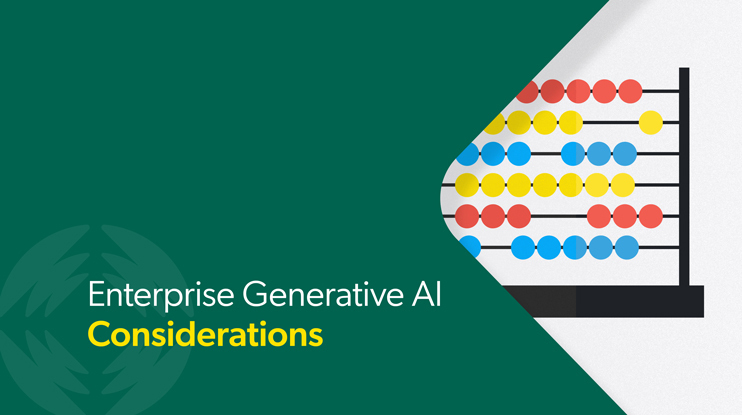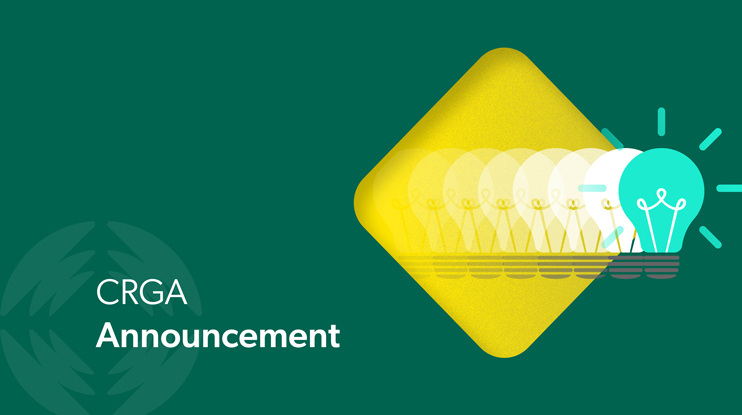There’s no question that generative AI (GenAI) is creating a paradigm shift across a global spectrum of businesses, workers, and consumers. Every industry has a story to tell about how this exciting—and a bit unnerving—new technology will impact their processes and workflows. GenAI has the potential to fundamentally change how we create products, hire employees, and deal with customers.
If you’re wondering what industries face the biggest potential for disruption, we have some clear—and promising—examples. Business sectors like retail, healthcare, and finance are already experiencing seismic shifts from GenAI. Below, we cover four of the most AI-disrupted industries—sectors that are completely reimagining business as usual thanks to generative models and tools.
What Is the Adoption Rate of GenAI?
Although nascent, adoption of GenAI is already widespread according to McKinsey. A survey of 1,684 participants globally across multiple industry sectors, company sizes, and functional specialties found almost a quarter of respondents saying they are using GenAI for their work. Unsurprisingly, the technology sector was highest in this usage.
This adoption rate shouldn’t be shocking — the pandemic was a catalyst that forced consumers to use technology in ways they hadn’t before. They logged into online platforms and apps to see their doctors, buy groceries, and get work done.
Businesses were forced to adapt quickly, embracing new technologies and processes so they could accommodate this monumental shift in consumer behavior. Even traditional business sectors like finance and healthcare began adopting new technologies and integrating AI into their workflows.
Tools like telehealth systems, AI-enabled enterprise search engines, and virtual conferencing apps helped businesses connect with customers digitally during a time when people were hunkering down and staying home. By 2022, 35% of businesses were using AI in some way and 42% were experimenting with it.
Within the broader field of artificial intelligence, GenAI stands out for its potential to tackle creative work in ways machines weren’t able to before ChatGPT was launched this past December.
Generative tools are trained on data and use ML to create unique text, images, and other content based on user-input (e.g., prompts). The GenAI market, valued at about $11.3 USD in 2023, is projected to reach nearly $52 USD billion in the next five years.
Impact of GenAI on Workforce and Jobs
GenAI’s impact on the workforce and jobs is a mixed bag. On one hand, GenAI makes jobs like content creation and product development faster and less resource-intensive. This has implications for job displacement and staff reduction.
But there’s no denying that GenAI is also creating new roles in areas like data analysis, AI programming, and oversight. Examples of new roles connected to GenAI include prompt engineer, AI trainer, and AI auditor. Here are a few industry-specific use cases for GenAI:
- In pharma, it’s speeding up drug discovery and design, reducing the costs and timeline of drug discovery.
- In manufacturing, companies are using it to design custom parts optimized for performance, materials and manufacturing methods.
- In media, it’s helping marketers create outbound marketing messages at scale.
- In automotive and aerospace, it’s composing new materials that target specific physical properties.
Using GenAI to perform tasks previously relegated to humans poses some challenges. Some models perpetuate human biases, for example, when used for government projects.
There’s an obvious need for transparency and close oversight to avoid bias, discrimination, plagiarism, and incorrect information (e.g., “hallucinations”). Job loss is also a very real concern among people in the workforce (which is all of us). In a recent Coveo study of 2000 American workers, 14% said they were afraid GenAI will take their jobs. And managing the many inherent risks is giving CIOs headaches.
On the other hand, when our survey participants were asked an open-ended question about the benefits of GenAI, they responded enthusiastically.
With that said, here’s how four top industries are dealing with GenAI head on.
1. GenAI in Health Insurance
Health insurance companies are improving member experiences with AI in some interesting and innovative ways.
Key GenAI applications showing promise in the health insurance industry include:
- Improving member portal usability: Member portals are becoming easier to use thanks to adaptive search experiences powered by GenAI. The technology interprets user signals as data points and uses this information to retrieve answers quickly based on member searches. It does this by automatically filtering results, suggesting queries, and presenting unified search results from multiple databases.
- Making customer service better: GenAI helps customer service agents by detecting issues based on member interactions and guiding members to resolution. It also acts as a personal assistant to customer service agents by summarizing insights based on content, user actions, and affinities. It can respond to natural language queries, make recommendations, and generate relevant answers in a way that makes sense based on whatever channel is being used.
- Personalizing member content: GenAI personalizes content by analyzing data from connected medtech which it uses to make personalized health recommendations, customize offers and serve up relevant content (e.g., offering wellness incentives like gym memberships to members tracking their weight, blood pressure, and BMI).
2. GenAI in Healthcare (excluding insurance)
The realm of healthcare is a big one, so we wanted to give its own category apart from health insurance.
Here’s how GenAI may shake up the healthcare sector:
- Automation: Thanks to AI, some of the mundane work inherently associated with healthcare can be completed by AI-enabled tools that automate repetitive or time-consuming tasks. This not only allows specialists and other healthcare personnel to spend more time on patient care, it reduces human error. One example: AI can generate insights from patient data, identify patterns, and make predictions that can aid in patient care.
- Virtual patient care: In a virtual care setting, AI can monitor patient behavior and alert doctors and other practitioners about an issue that needs follow up. Again, this also helps reduce error since Biofourmis, for example, is a virtual care management service that uses AI to remotely monitor patients with complex chronic conditions.
- Diagnosis: AI has begun outperforming humans when diagnosing various conditions. Viz.ai is a care coordination platform that uses patient brain scans to identify early signs of large vessel occlusion strokes. The Mayo Clinic’s AI-assisted screening tool can identify people at risk of left ventricular dysfunction with 93% accuracy. Digital Diagnostics uses AI to detect diabetic retinopathy and some types of skin cancer.
- Precision medicine: GenAI facilitates precision medicine by using patient data like disease profile, diagnostic information, and demographics to create tailored treatment protocols. The approach uses ML algorithms with large datasets that include genetic information, demographic data, or electronic health records to predict a prognosis and recommend a treatment strategy.
- Drug discovery and development: AI models can perform drug compound property and activity prediction. They’re being used for de novo design of drug compounds, a computational approach that designs drug molecules from scratch using atomic building blocks or existing ligands. One of the most promising applications of GenAI in healthcare is in drug discovery—AI models are being used to mine vast stores of biomedical data to discover new applications for existing drug compounds.
3. GenAI in Banking & Financial Services
Banks are optimistically approaching GenAI as a potential solution to enhance the customer experience, power efficient service outcomes, and boost employee productivity, while seeking to minimize security risks.
Here are some potential GenAI innovations in banking and financial services:
- Making banking easier: GenAI could be a huge help in first contact resolution. By surfacing answers in both self-service and assisted support scenarios, customers can resolve problems and agents can be empowered to generate ideas for novel issues. GenAI should be able to create answers that are more tailored to the customer’s situation (which life-stage, what wealth segment, etc.) These insights can be delivered to a customer service rep, who will act as the human in the loop, before they are delivered to customers directly.
- Improving people’s financial wellness: AI applications can help customers spot new opportunities to improve their financial wellbeing, by describing (and linking) to resources like budget calculators or credit card maximizers. real-time advice to help customers make better financial decisions.
- Boosting employee productivity: AI programs – beyond generative – are already being rapidly deployed in financial services to improve customer service by reducing the time employees spend searching for information. For example, AI-powered intelligent search can be used to analyze customer queries and automatically provide customer service agents with relevant information or suggested responses. This shortens handle times on calls with complex, multi-part, questions since agents don’t have to search across multiple applications. It also makes it more likely that a customer’s issue is resolved with the first call versus being escalated to another agent.
4. GenAI in Commerce & Retail
We’d be remiss if we didn’t include commerce and retail among the top industries using GenAI. This sector was particularly hard-hit during the pandemic, but also more willing than most to adopt new technologies.
Here are a few ways commerce & retail may benefit from GenAI:
- Personalized recommendations: As with other sectors, retail companies use AI to analyze consumer data to generate content in the form of recommendations, personalized content, and custom offers and deals.
- Voice-enabled shopping: AI voice recognition programs like Amazon’s Alexa are being integrated with devices like smart speakers, phones, and televisions to facilitate voice-enabled shopping. Customers can make voice-activated payments, place orders, and do product searches using these AI assistants. Now, companies like Google are planning to “supercharge” their AI assistants by adding GenAI capabilities that allow users to make simple commands or queries, but have actual conversations and provide more complex demands, just as they do with generative tools like ChatGPT.
- Automated customer service: AI chatbots provide 24/7 customer service to retail customers. They can handle simple or complex customer issues, but also act as sales associates by providing product recommendations and guiding the buying journey.
- Conversational support: Enabling conversational commerce using chat, messaging, and other natural language interfaces to interact with brands.
- Create Photo-quality Product Previews With 2D & 3D Modeling: Most fashion and home decor retailers showcase product images in variations because customers are more likely to make a purchase if they can preview a customization. To make this possible, retailers pay for extensive photoshoots involving different variations of the same products, and designers have to spend large amounts of time rendering 2D and 3D product images with different colors and patterns.
GenAI solves both of these problems by generating images using textual prompts, supporting the creation of photo-realistic product previews without physical production, shooting, or rendering of the scene.
The future of GenAI disruptions and their implications
GenAI, particularly large language models (LLMs) like ChatGPT, is transformative. It’s changing how businesses interact with customers and modernizing every phase of business operations.
But the adoption of GenAI presents challenges, including data privacy and security concerns, and the potential for bias in AI solutions. One way to stay ahead of the curve in the era of GenAI is to use an enterprise-ready platform like Coveo.
Coveo’s Relevance Generative Answering is an AI-powered enterprise search engine that uses Large Language Models (LLMs) to identify informational snippets in your documents and generate accurate answers to user queries. It’s secure and trained on your own data, so you know the answers it generates are appropriate and relevant.
In our 2023 Tech Report on Enterprise Search & AI, 84% of respondents said their organizations see search as critical to driving digital business transformation. And with 80% of businesses pivoting innovation resources to resiliency, intelligent search helps you tap into all the data and knowledge you have available.
Have questions or want to learn more about Coveo’s Relevance Generative Answering technology? Book a demo today.
Enterprise-tested, enterprise-ready




